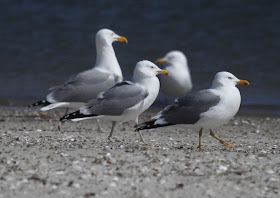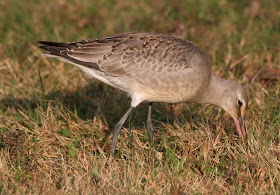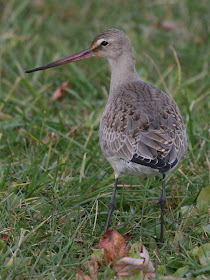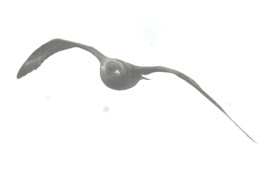Timeless Monhegan Island, Maine-
September 8, 2010- Monhegan is one of those very special gems of New England that always leaves a lasting impression in your mind no matter how many times you have been there. Monhegan is timeless; when you step off the Laura B (the famous ferry/supply boat out of Port Clyde) you are immediately captivated by its very quiet isolated charm and its simple and friendly way of life. But it is the quiet relaxed atmosphere and the unhurried pace that noticeable contrast to the hectic schedule of modern lifestyles.
Monhegan is a small, rocky
Island ten miles out from the mainland. The
Island is small, just about a square mile in area.
There are no paved roads or vehicles on Monhegan except the local delivery truck and a few old trucks used by the local fisherman.
The
Island’s economy is still ruled by the fishing and lobster industry. The year-round population of the
Island has seldom exceeded sixty-five people.
The Island has always been a summer haven for artists, birdwatchers and other visitors who appreciate its isolation and the unspoiled and natural beauty of its wilderness areas. There are many undeveloped parts of the island outside the small main village and harbor. Twelve miles of trails wind through bird rich wooded areas and over rocky ledges to the high ocean bluffs.
I have been to Monhegan many times in the eighties and nineties. My quest was to research, experience and study the styles of carving of the noted decoy carvers from the areas along the Maine coast from years gone by. Maine is rich in decoy carving history, and innovative by its decoy construction methods. The Maine style of decoy carving is very desirable as collectible art. The appealing designs are considered ingenious by modern collectors, but actually were simply a ‘prudent by-product” from “thrifty” and resourceful New England carvers, boat builders and fisherman.
The decoys in Maine featured a “mortis and tenon” method to secure the head and neck to the body of the decoy. This attachment feature is commonly used in boatbuilding which adds strength to the joint. The most famous decoy carver from Maine was “Gus” Wilson (1864-1950), and the most famous area for decoys from Maine was Monhegan. Gus Wilson’s decoy style had changed over the years being influenced by the local flavor. But it was his “Monhegan period (late 1800’s –early 1900’s)” that was his most famous and most desirable. Mr. Wilson was a Lighthouse keeper and was stationed in may areas along the coast; one of them being the Marshall Point Lighthouse at the mouth of Port Clyde Harbor. From this Lighthouse he watched the endless flocks of sea ducks: Eiders, Scoters, Oldsquaw, Goldeneye, Red-breasted Mergansers and Black Ducks which became the subjects of his incredibly sculpted decoys.



By the standard of decoys in the early 1900’s his decoys were rugged and structurally sound and captured the “essence of the species”. But by today’s standards, they are prized works of sculpted art standing alone and unmatched as collectible decoy sculpture.
What makes Gus Wilson’s “Monhegan style” so appealing? Quite simply, it is the design of the head approach to the body. His Monhegan decoys showcase the downward pointing bill as if the bird was preening its chest. Many have interpreted this design as Mr. Wilsons desire to incorporate other active poses into the decoy rigs to add a natural appeal. In studying the design however, I believe it was a very innovative two-fold design first to prevent breakage to the vulnerable horizontal neck seam which often broke during normal usage. With the head designed featuring the downward angular bill, the head could be carved at a transverse angle with the grain, and with the bill touching the neck it would add much needed support and strength that discouraged breakage. With this rugged construction method added to the design, the added appeal of a preening bird resulted making it both eye appealing and structurally sound……and of course; sui generis!
Gus Wilson also carved many sea duck decoys in many other poses such as preeners, sleepers, open winged, calling, open billed sea ducks with clams, mussels and leather fish for Red-breasted Mergansers which also featured horse hair crests.
Gus Wilson “Monhegan” White-winged Scoters-
Gus Wilson Surf Scoters (aka “skunkheads”)
Gus Wilson Common Eiders-
Gus Wilson Red-breasted Merganser-
A few of my decoy mantle sculptures I have carved over the years influenced by Gus Wilson and Monhegan Island.
Red-breasted Merganser-
Harlequin Duck and Oldsquaw-
Harlequin Duck-
Oldsquaw drake-
Scoters-
Common Eider with mussel in bill-
The collection of decoys below was photographed at Marshall Point in 1988.
Jen had never been to Monhegan, so we decided to go. We stayed in the Port Clyde area, but unfortunately, the weather didn’t cooperate. The morning we were going to Monhegan it was foggy and rained all the way out.
Here is the Laura B docked in Port Clyde Harbor-
Passing by Marshall Point-
Welcome to Monhegan!
When we disembarked the Laura B onto the dock, it was raining very hard. Dressed in our ponchos we took a walk around the Village. We started to walk along the coastal trail #1 but it started pouring. Feeling it was a bit too much to go birding (and for my camera) we decided to take cover in a coffee shop to wait it out. After a few cups of coffee, we walked up to the Monhegan Lighthouse-
The view from the Lighthouse of the village and Manana Island with the incoming front- it poured rain most of the time we were there!
We ended up walking down to the main dock to wait for the return ferry. The rain had let up and the sun finally broke through- the front had passed! The birding from the dock was actually quite good!
Monhegan Harbor-
Inner Duck Rocks-
Moulting hen Common Eiders-
Laughing Gulls…..
……with Cormorants, Greater Black-backed and Herring Gulls.
This mallard duckling (second hatch) is only a few weeks old.
One of the many local Ring-necked Pheasants that walked around the village-
A begging Herring Gull-
This Double-crested Cormorant swam under the main dock and surfaced just below us-
The sun eventually came out towards the end of our visit. So we enjoyed the many Common Eiders and Black Guillemots in the Harbor by the main dock. Many of the Guillemots were flightless from moulting-
Just after leaving Monhegan, the Captain spotted this adult Bald Eagle on outer Duck Rocks, (a cluster of small rocky islets just north of Monhegan) and got closer for good looks.
On the trip back in we spotted more swimming Eiders and Guillemots, a few flying Gannets and Greater Shearwaters. Passing by Marshall Point watching the locals do what they do best-
As we approached the main dock of Port Clyde Harbor, there were at least half a dozen Black Guillemots feeding close to the docks. Some were right below the Dip Net Restaurant and others were by the Processing Plant. Here are two adults changing over from breeding black to winter white plumage.
Sula by Surprise!
May 01, 2001- Coxes Ledge on the Gail Frances cod boat- Jen and I had returned early Monday morning from the long weekend (left early Thursday morning) from the World Championship Carving Competition in Ocean City, Maryland- and event that I had been going to since 1981. Below is my entry of Emerald Toucanets entitled “Emeralds, Orchids and Jade” which captured “Third in the World Life-size” and first place “Peoples Choice Award”.

After such a long weekend show and a very long year working intermittently on my Toucanet sculpture, I needed a day (or two) to decompress! So I decided a late spring pelagic birding/codfishing trip was a good way to unwind, so I drove to Galilee and boarded the Gail Frances. The morning started out foggy and continued all the way out to Coxes. I only saw a few Gannets and Sooty Shearwaters on the way out, but other than that it was slow. I didn’t fish much, but have to admit, I enjoyed just relaxing on the stern bench thinking about the past year, and tossing over a few ideas in my head for my new piece for the next show.
I was talking with Capt. Richie DeLuca as the fog started to break up; it was late morning. As we were chatting seven Gannets appeared out of the mist including a smaller bird that was dark brown. Capt. Richie is a birder as well, and we both just assumed the bird was a small juv. Gannet; we never expected anything else. The bird disappeared into the mist with the other Gannets. About an hour later the bird reappeared and circled the Gail twice. In 2001 I was still shooting film cameras, and slide film is what I had with me that day (unfortunately I later had the slides converted into digital images and the quality is poor). I took a few quick shots of the bird as it passed by the stern before it disappeared again.
About a half hour later, Capt. Richie and I were chatting again when the bird appeared and the same thing happened, it circled the vessel again, and flew off to the east.
Fifteen minutes later it showed up again, and again circled the Gail, but this time I snuck over to the starboard side in hopes to catch the bird as it passed by, but I never saw the bird. I assumed that the bird had flown towards the bow and kept flying out of sight.
A moment later, Capt. Richie came out from the wheelhouse and walked down to the main deck to tell me that the bird had landed on the upper deck. When I reached the upper deck, there it was; it was perched on the railing! Not only was it perched on the vessel, I finally realized that I was looking at a Brown Booby; a species that I would have never expected to see!
I took a roll of slides as the bird started preening, and I slowly slid closer on one of the benches as I changed the roll of slide film…….
…..until I was very close to the bird, it was spectacular! I shot three more rolls of slide film which left me with only one roll (I am glad that I finally went to digital cameras)! The last roll of film was placed in my camera and filled it. I was so close to the bird at this time that I actually reached out and stroked the bird which it seemed to enjoy.
The bird stayed for an additional hour which Capt. Richie and I enjoyed. The Booby eventually took off and flew east and out of sight. This will always remain one of the most memorable bird interactions of my life!
Alcid Flurry!
Cape Cod, First Encounter Beach, Orleans,November 19, 2010- Jen and I enjoy the Cape in the winter very much and go there often especially for long weekends. I am always watching the weather and hope for a major fronts to pass through with strong northerly winds. These winds mean great viewing for seabirds, especially alcids from the beaches. The strong winds blow the birds closer to shore and often just off the beach. The winds on that weekend were northerly at 40 knots; perfect! We started at dawn at First Encounter Beach and were not disappointed as flock after flock of Razorbills passed by the parking lot all morning long. We counted well over three thousand Razorbills in the two hours we were there! The wind was so strong that I had to take these images (and hundreds more) shielded behind my open truck door otherwise I would have been sandblasted!

.jpg)






Later that morning at Welfleet Harbor, Jen and I were fortunate to have this Razorbill pop up below us on the commercial dock. As it swam along the dock, it dove.
Because the water is so clear, it was easy to photograph this alcid “flying underwater”!
Yellow-legged Gull-
Cape Cod, Kalmus Beach, Hyannis, April 16, 2011- This Gull harbored much controversy about its actual species identity. Many considered it to be a hybrid Herring x Lesser Black-backed Gull, others call it a true Yellow-legged Gull. That call will have to come from the experts….until then, I believe it to be a Yellow-legged Gull. Jen and I drove up on a Saturday morning to Kalmus Beach. When we arrived there were only a few Herring Gulls hanging around the large fresh water puddles in the parking lot, the place where the Gull was visiting. Besides the few Herring Gulls a handful of birders/photographers had assembled including Sara Zagorski and John Marshall from CT.
We parked my tuck near the other cars at the edge of the large puddle waiting for the Gull to (hopefully) show up. We were there for only ten minutes when I looked down to check the settings on my camera. Jen exclaimed that a Gull just landed in the puddle right in front of my open truck window. As I glanced over, Jen said, “ It’s got yellow legs”! Interesting side note- the Gull left the area the next day and was not seen again. Here is the Gull-
The Gull flew around the parking lot a few times often landing nearly in the same spot in the puddle where it was standing before it took off.
One time, it landed on the beach behind the bathhouse mingling with the Herring Gulls.
Sea-Pigeon of the North
Rye Harbor- Rye, New Hampshire, April 20, 2011- Tom Robben and I drove up to NH in search of the elusive Little Gull that was reported the day before. Although we did find and search through endless Bonapartes Gulls for the entire coast from Hampton to Odiorne Point, we never found the Little Gull; another “one hit wonder”! But we did have a great day birding spotting plenty of exciting birds including this Black Guillemot (aka Sea-Pigeon or reesetee as it is called in Newfoundland) in Rye Harbor-
On the way home we made two stops; one at Salisbury Beach Reservation and Sandy Point Refuge in Newburyport. As we were driving into the Reservation, we spotted many Harriers flying along the dunes including this male-
At the point of Salisbury Beach by the breakwater, we counted over seventy-five migrating Kestrels (mostly females) flying from the south across the river mouth and over my truck in the parking lot-
Short-eared in the Snow and Rain
Hammonasset Beach State Park, Madison, CT, November 7, 2010- This morning it was spitting snow and rain. I drove by the entrance to the Park just after 7:00 am expecting the gates to be closed. The Park opens at 8;00 am so I figured that I would bird the Madison area for an hour until the Park opened. As I glanced down the entrance road, they were opening the gates. The attendant waved me in, so that is just what I did. I was the first person in the Park that morning so I headed directly for Meigs Point. As I approached the small parking area at Meigs, I spotted an Owl standing on the small dunes and scrub right alongside the boat ramp road; it was looking right at me! I stopped, grabbed my camera and pointed it at the Short-eared Owl. The camera was set perfectly for the conditions that morning; dark, overcast and spitting snow. The lens focused quickly and I fired off a long flurry of images. I checked the shots quickly in my LED screen, and all I saw were the words “no CF Card”! In my haste I had forgotten to put a flash card in my camera. I fumbled for a card and inserted it into my camera just in time to see the Owl flying away! Here are a few images of what I managed to take-









Pintail pair up close and personal
Oyster River, Woodmont, CT, February 20, 2011- On another coastal Gull search I stopped at one of my usual spots; Oyster River Beach. There were two tagged Ring-billed Gulls there one of which is “A485)……
…..and this magnificent pair (of three) Pintail on the beach with the Mallards, Black Ducks and Geese. The pair granted me a close look staying only a few yards away from me-
Pintail x Mallard Hybrid
Fort Adams, Newport, Rhode Island, January 8, 2008- This one of two Mallard x Pintail hybrid have been showing up in this area for a few years.
Merlin attacks Crow
Hammonasset State Beach, Madison, CT, Sept 23, 2010- I only had time to take a few quick shots from the window of my truck. This Merlin attacked this Common Crow many times causing Crow feathers to fly. Eventually the Crow flew off and so did the Merlin-
Uncommon Winter Guest- Black-headed Gull
Great Harbor, Guilford, February 22, 2011- I found this Gull at the Lost Lake outporing at Leetes Island Road on my way home from a day birding. The Gull stayed in the area: Lost Lake, Leetes Salt Hay Pond, and Shell Beach for nearly a month.
Rare Fall Migrant- Hudsonian Godwit-
Hammonasset Sate Beach, late October/early November 2009- This Godwit was a celebrity- it was the subject of thousands of photographs from dozens and dozens of photographers. It stayed until the ground froze in mid-November. This Godwit survived four attacks from a Red-tailed Hawk, Merlin, Sharp-shinned Hawk and a Peregrine. These first few images are the Godwit “hunkering down” trying to hide from a Peregrine that was circling the Park. The Falcon left and the Godwit resumed its feeding; hunkering down worked!-
A Special Viewing- Peregrine Falcon
Hammonasset Beach Park, February 13, 2011- This Falcon was just sitting in a tree at the western end of the Park. It began preening, and I was treated to a special viewing; the Falcon let me walk within twenty feet of it. Breathtaking!-
Southern Surprise
Hammonasset Beach Park, October 4, 2010- Just after a coastal storm, I stopped by Meigs Point early in the morning just as the Park opened. I spotted a small flock of Laughing Gulls huddled on the beach just west of the Meigs jetty. As I approached the Gulls for photos, three Black Skimmers (1 adult, 2 juveniles) landed with the Gulls. That was a nice and unexpected surprise!
The skimmers flew around a few times “skimming” and then landed back on the beach-
A Pair of Black Guillemots
Fort Wetherill, Jamestown, Rhode Island, December 29, 2010- There was a pair of Guillemots spending part of the winter around Fort Wetherill; one near the Rhode Island Marine Fisheries Bldg, and the other one in Kettlebottom Cove along the western shore of the Park. Most of the time Jen and I saw the one bird by the Marine Division Bldg, it was out from shore feeding around the Island. That morning it was very windy, and Jen and I stopped by parking area next to the bulkhead by the Marine Division Bldg. and I was looking at a small flock of Eiders across the small Harbor. I started taking pictures of the Eiders when Jen said “Why aren’t you taking pictures of the Guillemot right in front of you”? I looked down at my feet below the bulkhead, and there it was! The bird dove and returned to the surface with a sandworm.
Another CT Razorbill
Meigs Point, Hammonasset, December 22, 2010- I found this to be a good season for Razorbills in CT. I had seen quite a few that wintered off New London, Groton, Old Saybrook and Madison including the rocks around Tuxis Island and off the jetty at Meigs Point. That morning I was standing at the beginning of the Moraine Trail when this bird just popped up in front of me very close to the shore!
CT Common Murre
Meigs Point, Hammonasset, January 29, 2011-
Wild Pelagics-
Coxes Ledge, from the deck of the Gail Frances, October 26, 2007- It was a long ride to Coxes with 20 – 25 knot east winds and very large seas. This was the first day I was using my new and first digital camera; a Canon 10D! Coxes was covered with a continual passage of sea birds: Greater Shearwaters, Northern Fulmar (including many blue morph) and a handful of Pomarine Jaegers.-
One of the many blue morph Northern Fulmar…..
…..and one of the Pomarine Jaegers.
Keith Mueller
Killingworth, CT











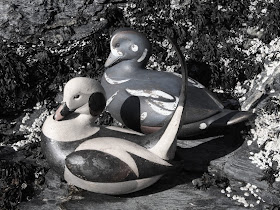






















































































































.jpg)




































